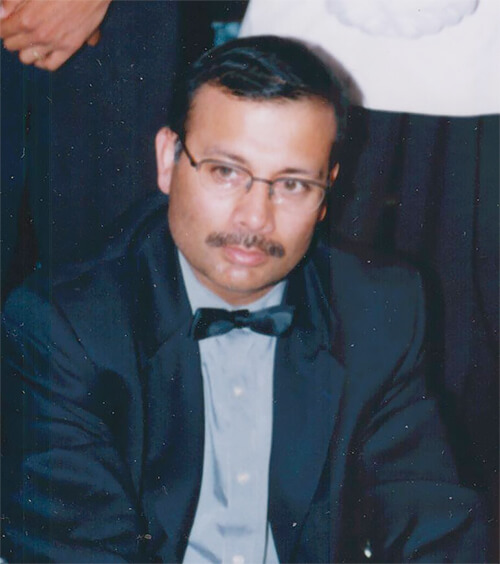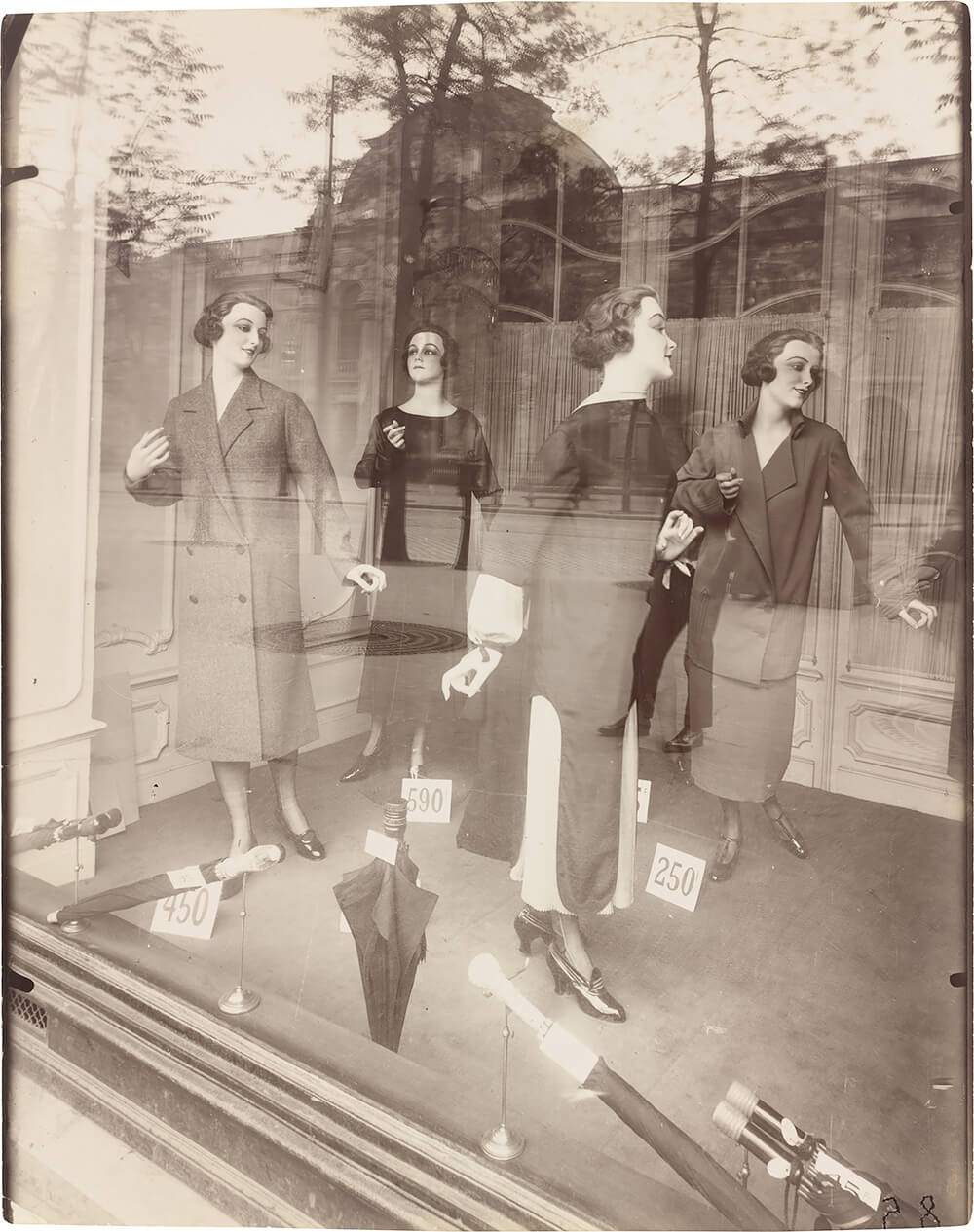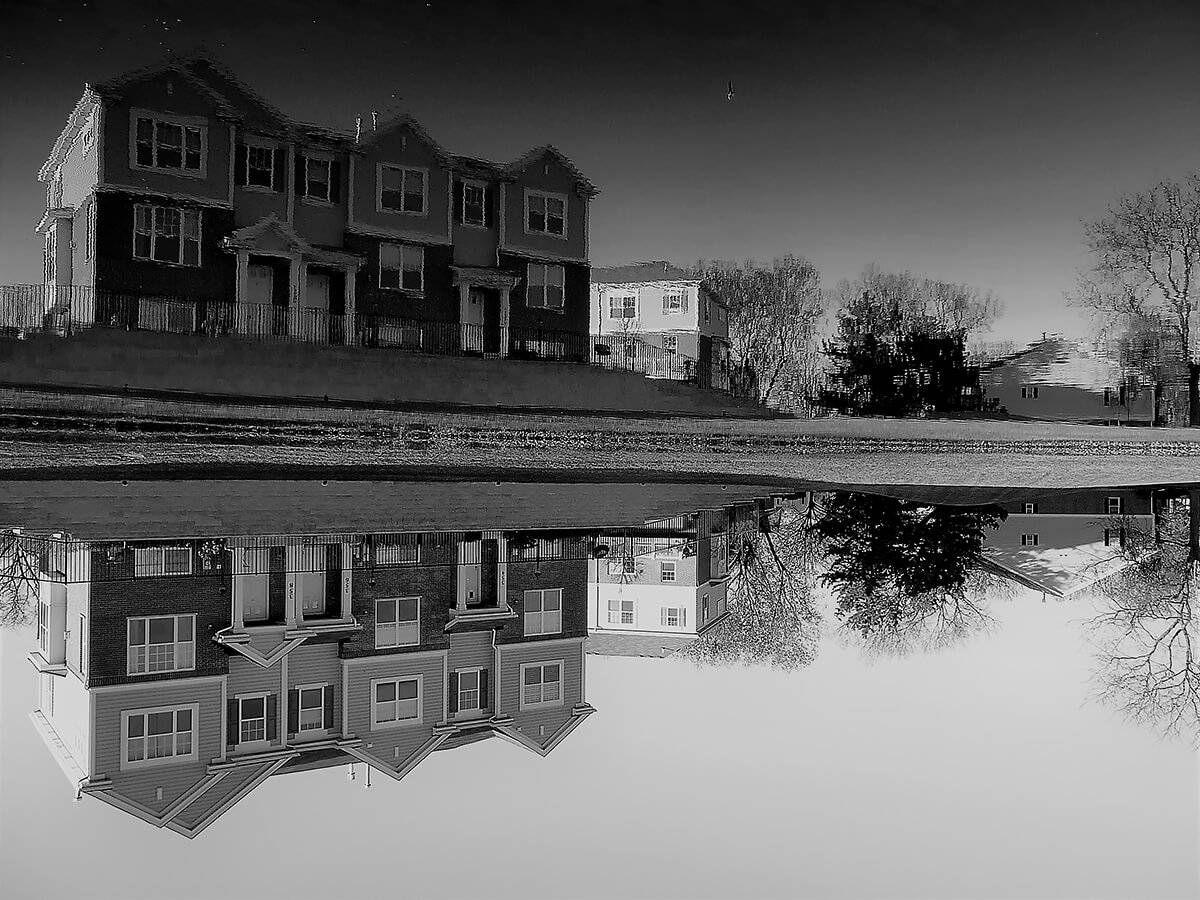Poet, Guillaume Apollinaire (1880-1918), in 1917, had coined the word, "surrealism."
"Surrealist automatism is a method of art making in which the artist suppressed his conscious control of the rational and logic, allowing his
unconscious to have sway. It is essentially, the exploitation of chance effects, to resolve the previously contradictory conditions of dream and
reality into a super-reality, surrealism..." - Andre Breton (1896-1955),"The Surrealist Manifesto"
If you look at reality closely, what you will see will be entirely surreal.
My Real Surreal experiences: I can't think of better examples than my own reactions, when faced with strange juxtapositions of elements. Few decades ago, I had lived in the Caribbean on the island of St. Lucia for three years - where, everyday, by 10AM it was 87 degrees Fahrenheit, and around 3PM a dense menacing cloud would descend to cover the same part of the hill where I had lived, and unleash a downpour. Strangely enough, just about fifty yards away, one could be in bright sun. After the downpour, as if someone threw a switch, the temperature, almost instantaneously, would climb to 93F with 98 percent humidity. In all of my three years there, I had hardly missed a day of this strange juxtaposition. This unfolded everyday at the same time, that's exactly why it was unreal.
On January 15, 1982, at 10.30AM, at the Port-of-Spain International Airport in Trinidad, it was 88 degrees, where my father saw me off to Chicago. It was a long flight. Bright westerly afternoon sun had blinded me through the window, as the plane turned right on the
approach to O'Hare Airport. As it turned I could see all the rooftops being white. I had never seen white roofs before. Half an hour later, upon exiting the terminal, what I experienced physically was a dichotomy. Blinding sun and minus 23F, with a windchill that felt like I was getting stabbed all over my body for deciding to come to Chicago. Within days, I had realized that a cloudless sky in the winter meant arctic conditions. So, I went quickly, from a surprise, to being accustomed to it.
A couple days later, I had boarded a Northwestern Commuter line at Elmhurst, headed for Chicago. Fifteen minutes into the ride, something had happened that I had never experienced. A dense lake-effect snowstorm swallowed the train, it rendered our coach into a white bread box, with all jaded faces, except mine. It was like some coded Sherwin-Williams experiment. Soon enough, all such experiences went
from being unreal, to real, on cue, and expected. The point I am trying to make is that there's only a diaphanous barrier between the real and the unreal, which is entirely dependent on two factors: time and our conditioning: Surprising juxtaposition > time > real.
The Relativist surreal: To us, the real or the surreal is a subset of Relativism. It's a proposition that the criteria for judgments are
relative, depending on the individual or a group, and their environs. What is surreal to one tropical person in Iceland, may just be real to the
resident there, or the inverse, if you switch their environments. There is, invariably, a psychological component to this phenomenon:
conditioning. And our conditioning alone is the basis for all our surprises, therefore, such experiences. However big the surprise to us, it has
an expiry time within our psyche, that's when it becomes real. The 3/11 Japanese tsunami, after the initial the shock and surprise, wore off to
a grim reality. It went from reaction to reason, rather quickly. And, surprise is not the same for everyone, the thresholds are different.
The Real-Surreal Dynamic: How can unreal be very real? It's contradictory, an oxymoron. Indeed, these are legitimate questions,
until we peer closer. The surreal (unreal) can be, and for the most part, very real. The Surreal in juxtapositions, is that which is in-congruent,
antithetical, the opposite, in other words, unreal. The Real, on the other hand is the representation of things as they are, as distinguished from
the abstract. The real is independent of the act of reaction and perception. The real is the expected, it's conventional, the norm, like a car on
the road. Surreal is the abnormal, unexpected, like a small ship atop a building. Surprise is the crucible of surrealism. Of course, the means
or the medium: the action is discounted, as we focus on the end result. Once the surprise wears off, it reverts to normalcy.
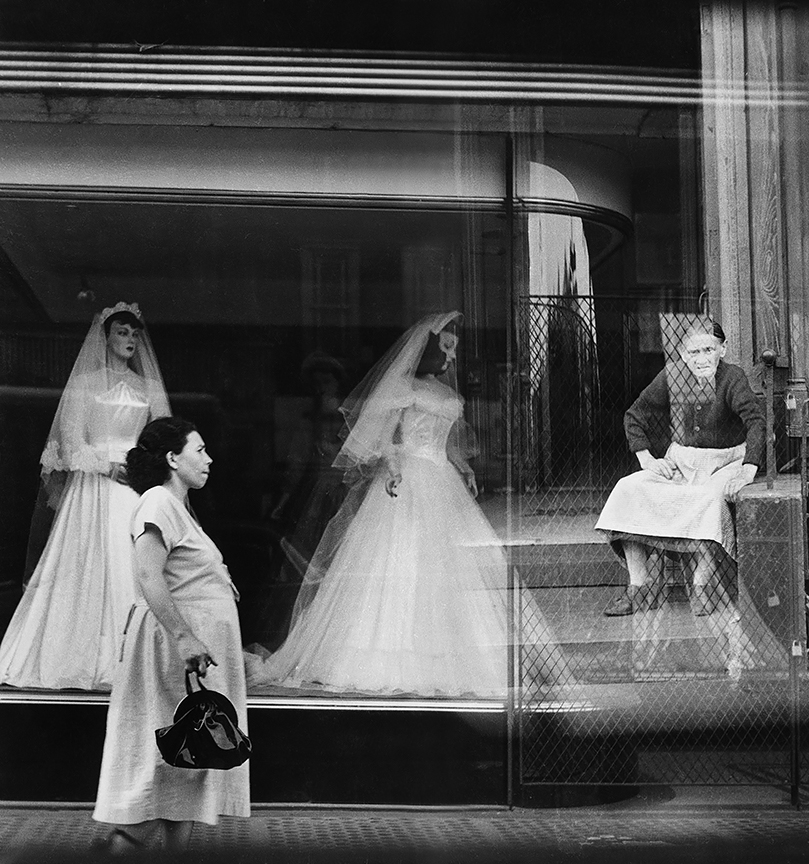
Three To Four Ages of Women 1950 © Art Shay
Another way to look at it is that the real: normal, and the surreal: abnormal, are a cyclical phenomenon. The surreal can manifest as
both, systematic and unsystematic occurrences. The unsystematic or the incidental-accidental surreal is something that an individual or a
large group can experience in nature. Whereas, the systematic surreal is the macro version of the prior, usually authored by humans, like
wars, plagues, or genocides etc, experienced by large swaths of populations. What if the whole population of the U.S, from the year 1870
were somehow teleported to 1970? How would the industrial revolutionaries react to the flower-power-rock-n-roll set? It's already incongruent
for the millennials when they juxtapose the Apollo 11 mission powered with less than 500KB of computing power, against their
iPhones that routinely sport 125GB, today. Getting to the moon and back on a few kilobytes of computational power is by itself surreal.
What is infuriatingly surreal is that with that megabyte firepower, we play games on our Lazy-Boys in the basement!
In a circuitous way, when the said organic, forced or contrived juxtapositions manifest, they become real, by virtue of the time
elapsed since first viewed. Therefore, it's from real-to-surreal-to-real. Then, back to being surreal as something abstract we contemplate on,
again, as the consequence of our conditioning. Example: again, in the aftermath of the 3/11 Japanese tsunami, the real scenes were quite
unreal, like Cars lodged in the trees or piled high like Dinky toys, large boats atop roofs, warehouses floating away, and a lone pine
withstanding a 40 foot wall of water. In time, everything outlandish becomes real. The Japanese, the effected, who survived among the
unreal scenes appeared to be distraught in their new reality, but, for the outsiders, the unaffected, it was astounding for quite a while. The
surreal is a temporal, fast dissipating phenomenon. But surrealism's abstract facets fire up our neurons with contemplation, than say
adaptation to reality. The latter is far quicker than the prior, therefore, the premise behind this art form. So, what happens when the surprise
wears off?
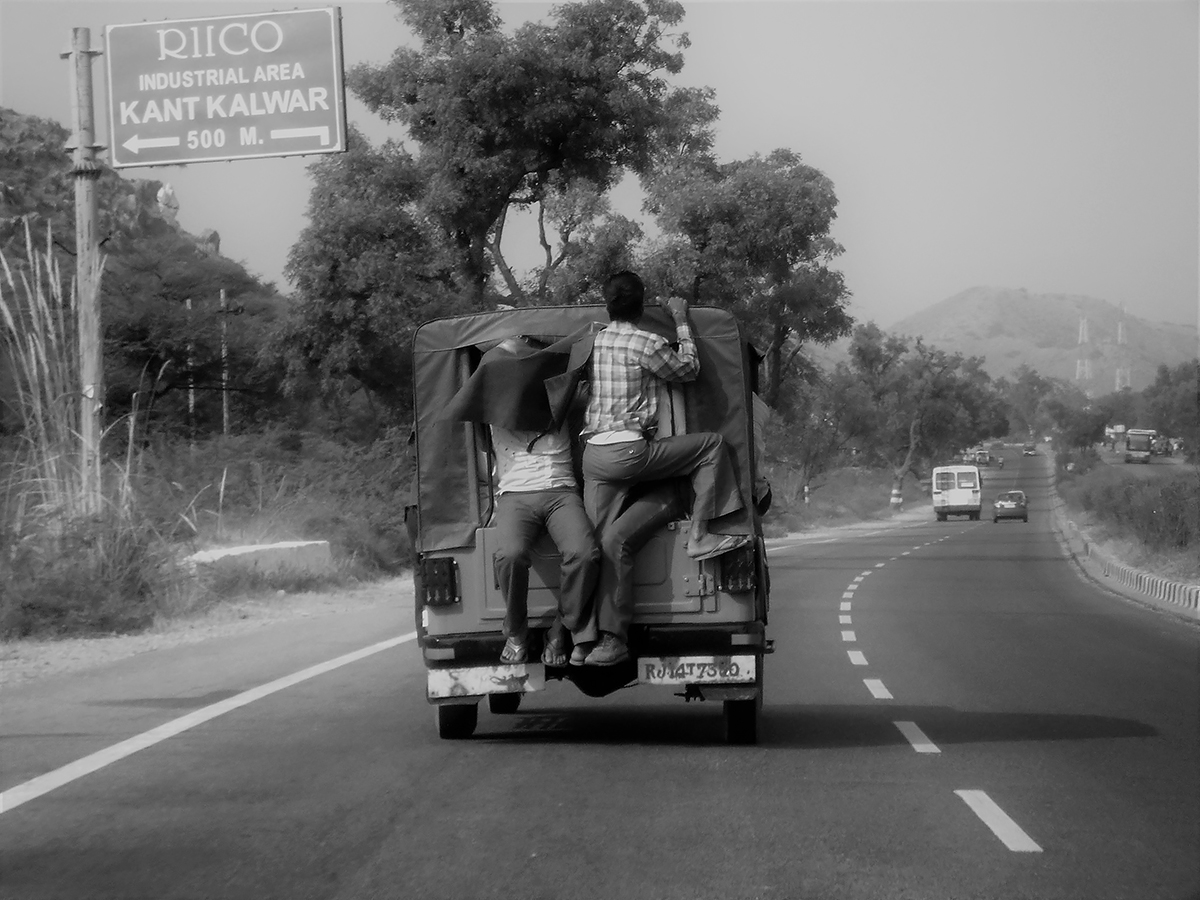
Just Get There, 2008 © Raju Peddada
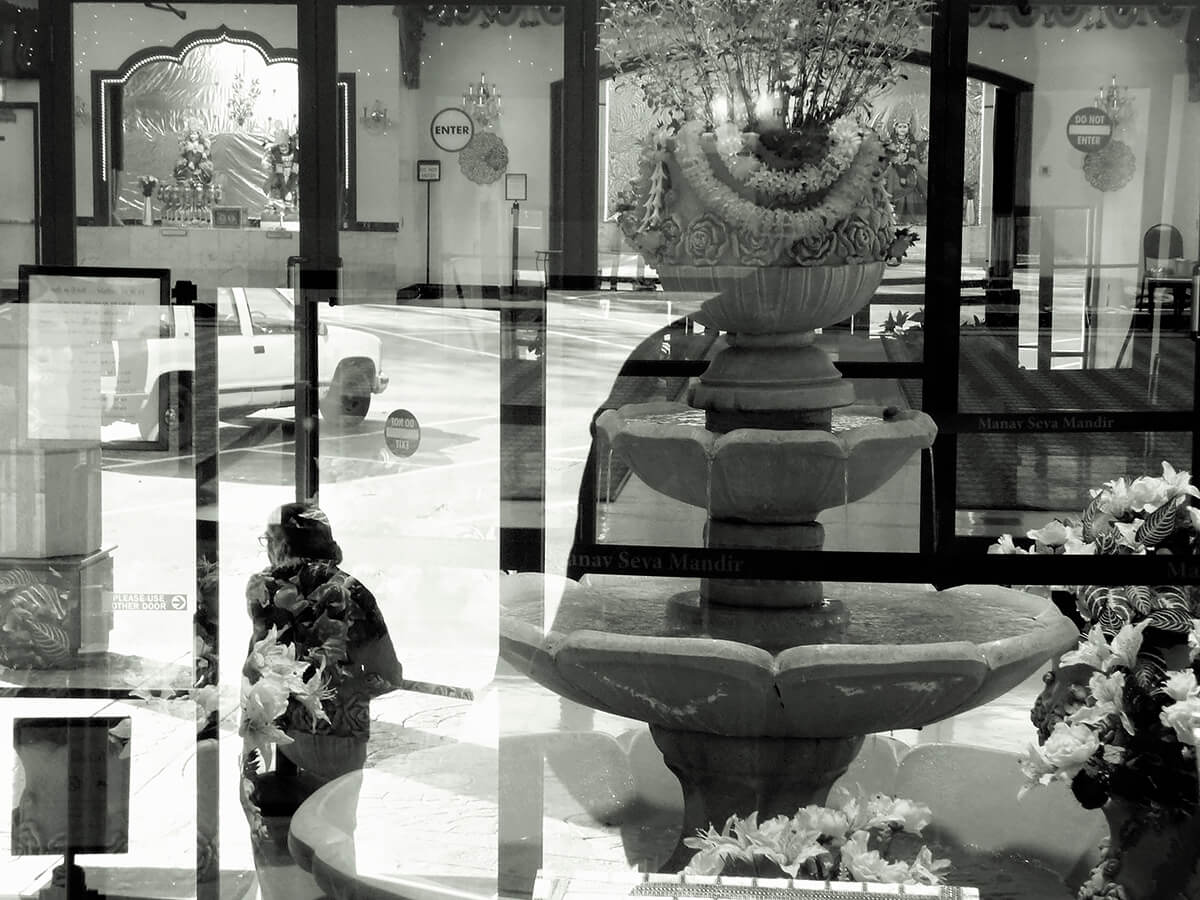
Fountain of Fortitude © Raju Peddada
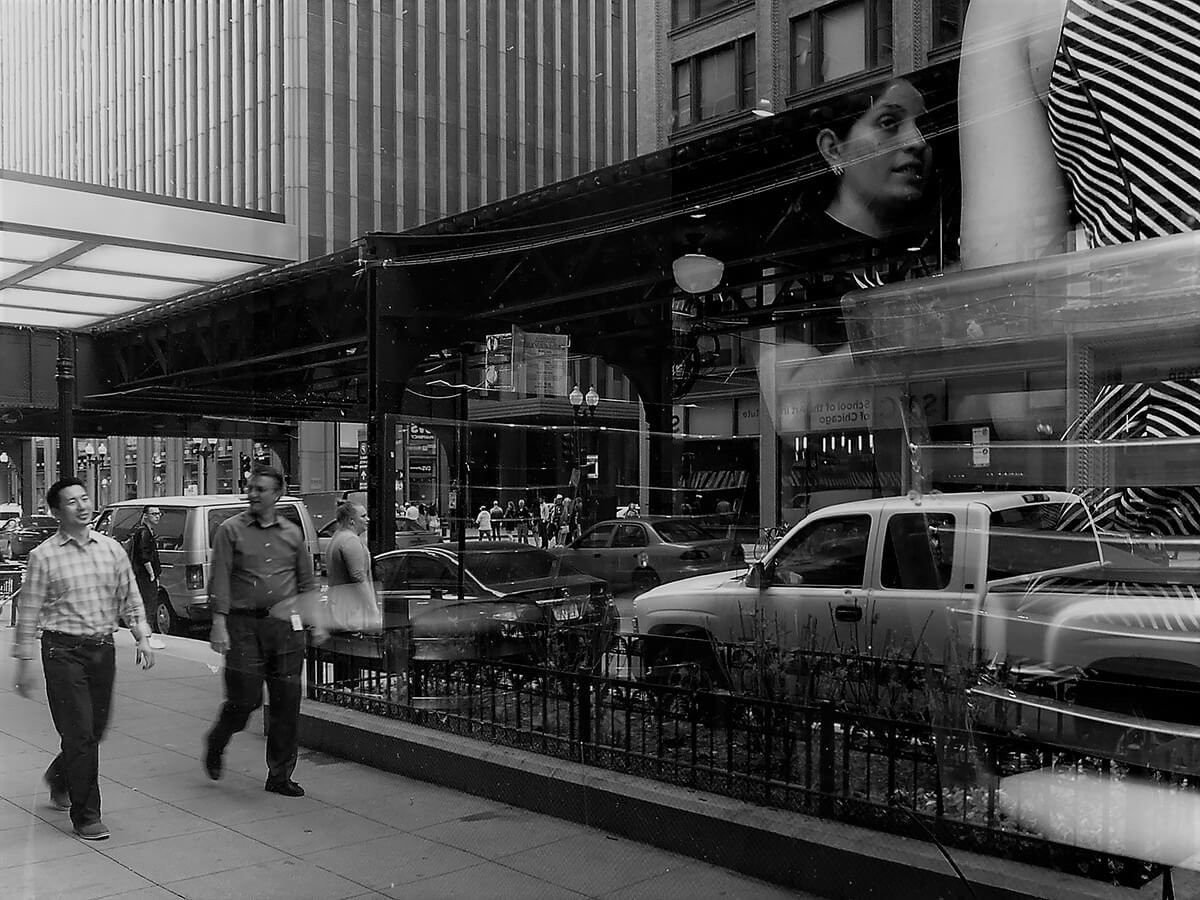
Double Date © Raju Peddada
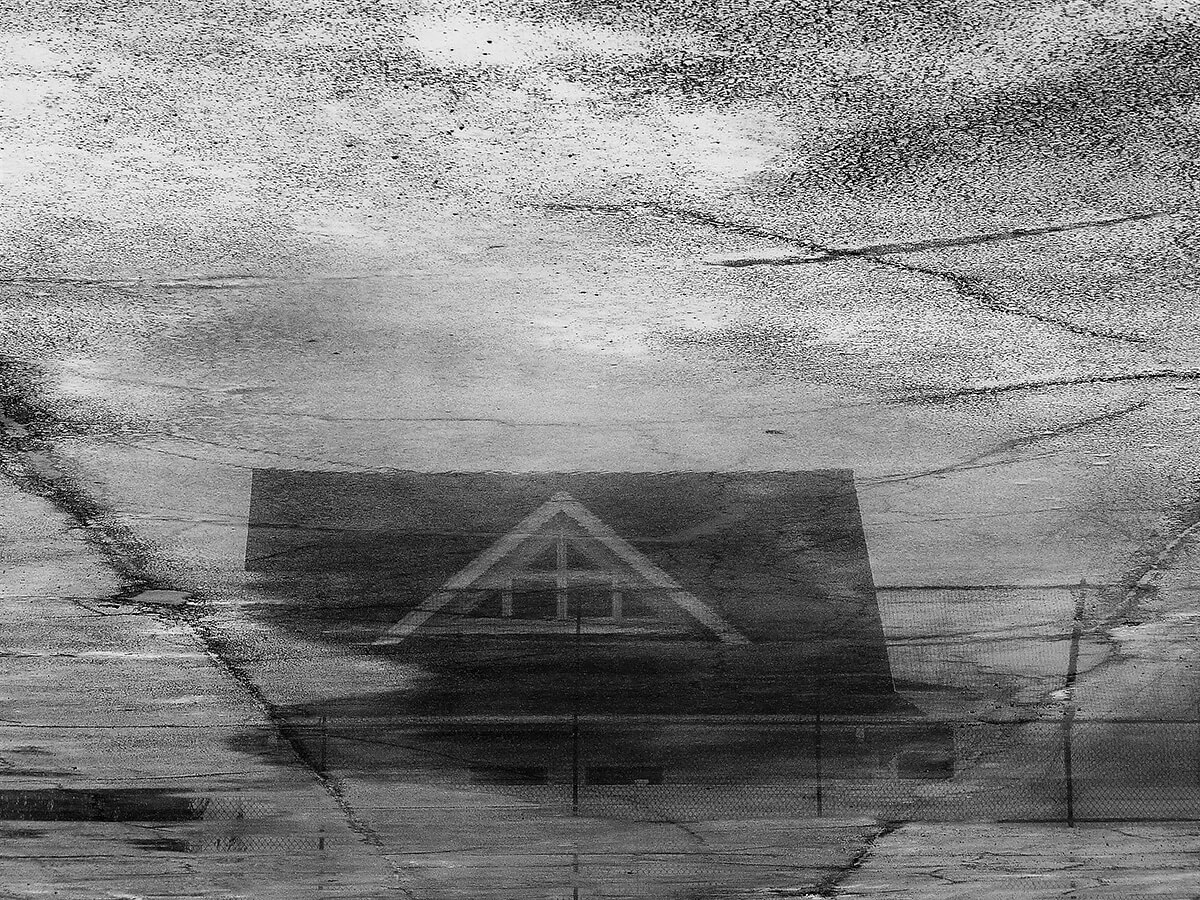
Roof on the Rink © Raju Peddada
When the surprise wears off, the real emerges in our consciousness. And, this new reality becomes the aesthetic quest, our instinctual quest of beauty, which is the core value of all existence. We naturally gravitate towards a discriminatory selective process. Whether it's gruesome, stately or effervescent, there is no escape from the aesthetic preponderance. Aesthetic presides over a felicitous condition or a tragic one. When the emotional reaction atrophies, we are able to detach from our prior state and engage in reason with our intellect. I once saw a roadkill, a spring nestling flattened by a vehicle, once I got over the
tragedy, the graphic of the flattened wings on asphalt evoked a metaphor: "Don't fly on the roads." A transmutation takes place, from a mere
fact: reality, we now know, to a universal value: beauty, facilitated by our senses, that serve only the aesthetic. Robert Capa's WWII pictures
were piercing, simply because, they depicted the real unimaginable conditions. First are, our emotional reaction that diminish with time.
Then, we become conscious of the aesthetic nuances that had evoked our reaction: perfect composition, movement, angle, light and other
details that imbibe us with the verisimilitude of being there. I call it the "vicarious verisimilitude." There's no denying the force of beauty.
The state of surrealism as an art form, today, is galactic in proportion. The Surreal is the exclusive today. The surreal is big brand business!
The unusual juxtapositions of material elements had been an uptrend for decades. Brands like Richard Mille, Dolce & Gabbana, Keonisegg,
Lambhorghini, Combat Motors, Alexander MCQeen and a myriad other brands offer unreal product design experiences, that induces
customers to shell out millions of dollars for the simple pleasure of having and experiencing something surreal, as in abnormal utility, beauty
and quality. Even vacation planners have gotten into the act, and offer the surreal for the intrepid: Standing at the edge of an active volcano,
deep sea diving, vertical climbing, trekking through the Amazon, petting lions and tigers, etc.
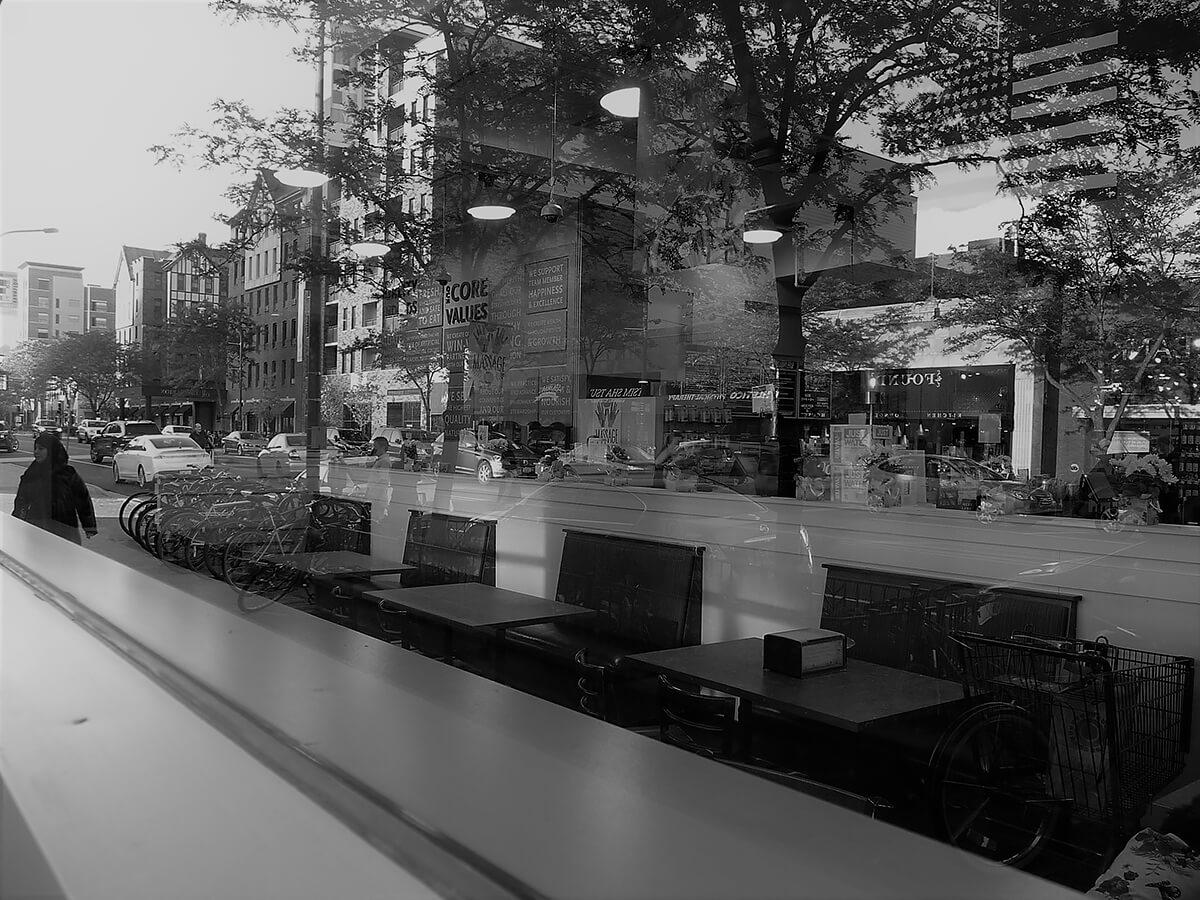
Outise Eating © Raju Peddada
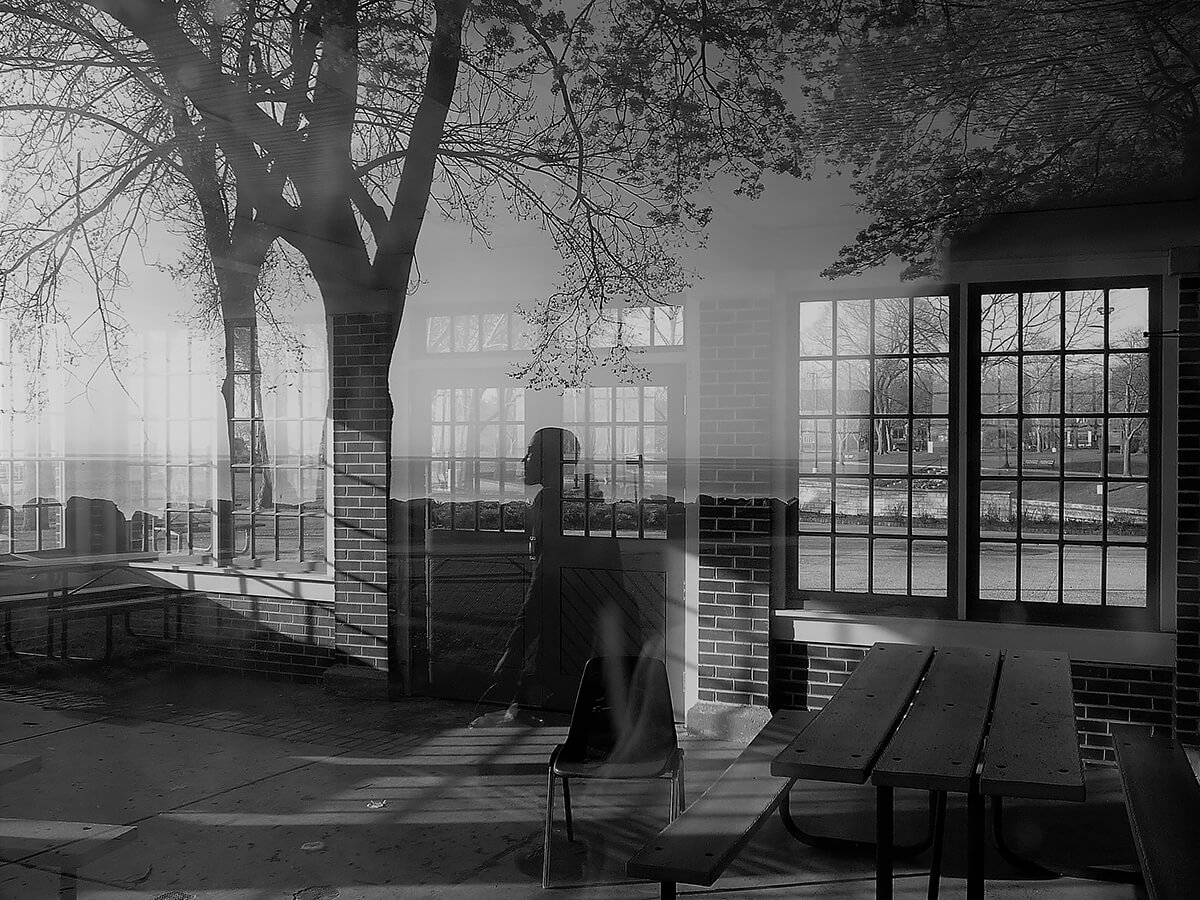
Daylight Specter in Evanston, 2019© Raju Peddada
Starting in the early seventies, Surrealism forked out from being just a single artist's two-dimensional escapade, to being a multi-dimensional
corporeal experience in motion picture films. These three men had obliterated the frontier of limitations. 1. In 1975, George Lucas became
the singular pioneer of motion picture surrealism, with his "Industrial Light & Magic" and later CG (Computer Graphics) that helped create
warring intergalactic civilizations with his "Star Wars franchise for the 70MM screens, that now sport three generations of followers. 2. H. R.
Giger, the father the Bio-Mechanical Aesthetic, with his fantastical symbiosis of machines and the human anatomy in sculpture and
paintings, gave birth to the most successful horror films franchise, plus the gaming industry. He created unreal worlds that portended
annihilation, extinctions and extensions, highlighting humanity's self-destructive mien. 2. Ridley Scott and James Cameron were inspired by
Giger's menacing world of xenomorfs to create what today are considered the ultimate horror classics; "Alien." and "Alien II." Cameron's
surreal CGI masterpiece, "Avatar" took in unreal numbers at the box-office. This had opened the flood gates to plays in Alternative Reality,
Simulation, Gaming, as apps for a myriad devices, at everyone's fingertips, Hell, even our politicians have become surreal! But, all this had
originated somewhere.
Photographic surrealism: This disquisition was intended to recognize the hundredth anniversary of photographic Surrealism that
was inadvertently authored into existence by
Eugene Atget in 1917, and furthered by Andre Breton in 1924, with his "Surrealist Manifesto."
Ironically, any manifesto, emanating in and from human endeavor, inherently, possesses a python's instinct, which is to choke off the liberty
of individuals, let alone their creative impulses. Thus, the appellation "manifesto" is charged with negative neutrons, as in the "Communist
Manifesto." Rules, if they exist, are the knotted choke points for all creative pursuits. Erich Auerbach, in his critical classic; "Mimesis," was
manifest against any and all rules imposed on our creative endeavors, especially, writing. Why not photography?! I thought.
In terms of art, surrealism is: the non-rational, subconscious imagery, and surprising juxtapositions, have a hypnagogic effect: inducing drowsiness in an inexplicable disquiet.
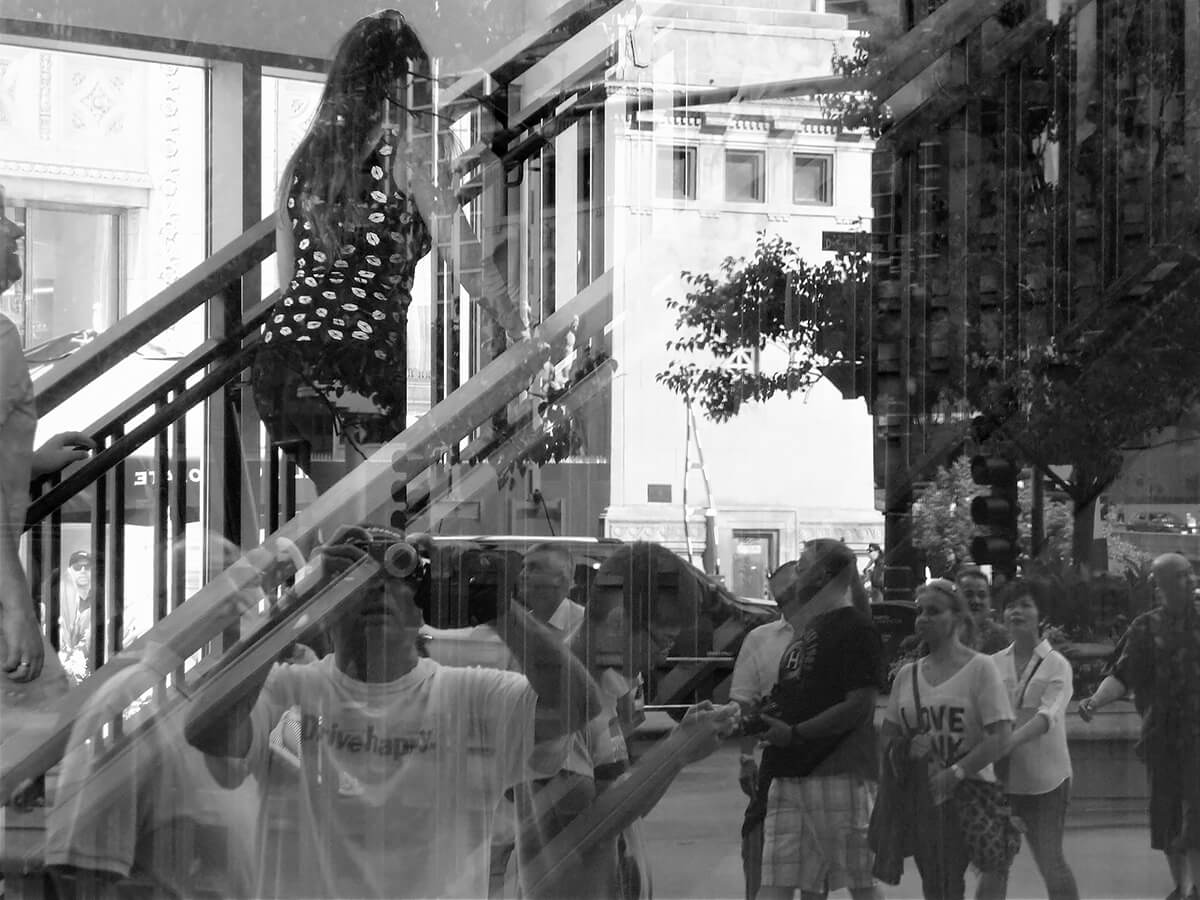
Quest for Choclate © Raju Peddada
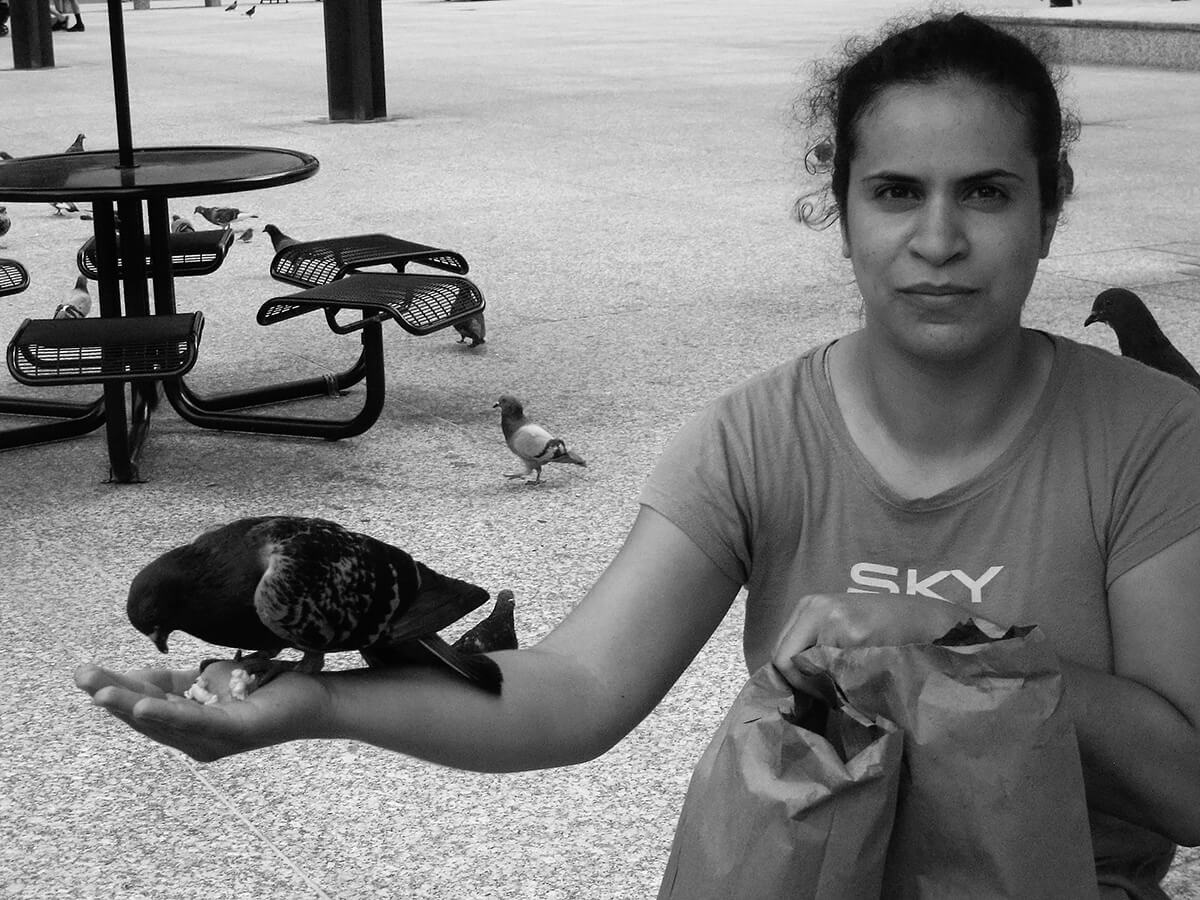
Two Eaters © Raju Peddada
The surreal is usually an accident in material juxtapositions. But, Surrealism is an art movement with roots in another early 20th
century art movement: "Dadaism." The early practitioners of
photographic surrealism, except for Eugene Atget, others like Guillaume
Apollinaire, Andre Breton, Salvador Dali,
Man Ray, and Rene Magritte had focused narrowly on specific concepts, mostly staged and
photographed, with nothing extempore. They had relied on a method of repressing their conscious, to uncoil their unconscious in order to
reclaim what the conscious found irrational and dysfunctional. Only Eugene Atget, over a hundred years ago, was the earliest predecessor
and link to my style of work. However, Atget was a documentarian, with a large format camera, that necessitated long exposures. Prints were
the size of the negatives. He was often referred to as "the Balzac of the camera" with the French Civilization as his subject. In contrast, I am
a photographic opportunist, with a small camera, quick shots of moving subjects that depict the fragmentation within and without. I
document ambiguity, our inherent condition, that is narrated by the said fragmentation.
My photographic surrealism is not of the contrived, neither of a staged variety, as in Dali's or Bellmer's work. My work is rather the
accidental type, extempore, exactly like life, unscripted, as it unfolded. I look for the chance encounters, the incidental confluence of ideas,
metaphors or aphorisms, in our movements through the layers of urban structures. And fragmentation being our natural condition, it
corresponds to the abrupt juxtaposition of urban elements that narrate concisely what we cannot clearly see, our existential dubiousness. This
ambiguity yields nuanced perspectives and parallaxes, in our non-linear movement through spaces we had built for ourselves. It also
suggests a life authored in our impulses, whims, diversions and accidents. Can we deny that everyone we had ever met was not an accident?
I seek immediacy, try and limit time's capacity to render real from the unreal, stop this transition so we can perceive our fragments. In all of
this, I sense ambiguity's certainty, it's manifest in the mind's eye. The deception appears to be clear and real, but look closely, it's an illusion,
unreal.
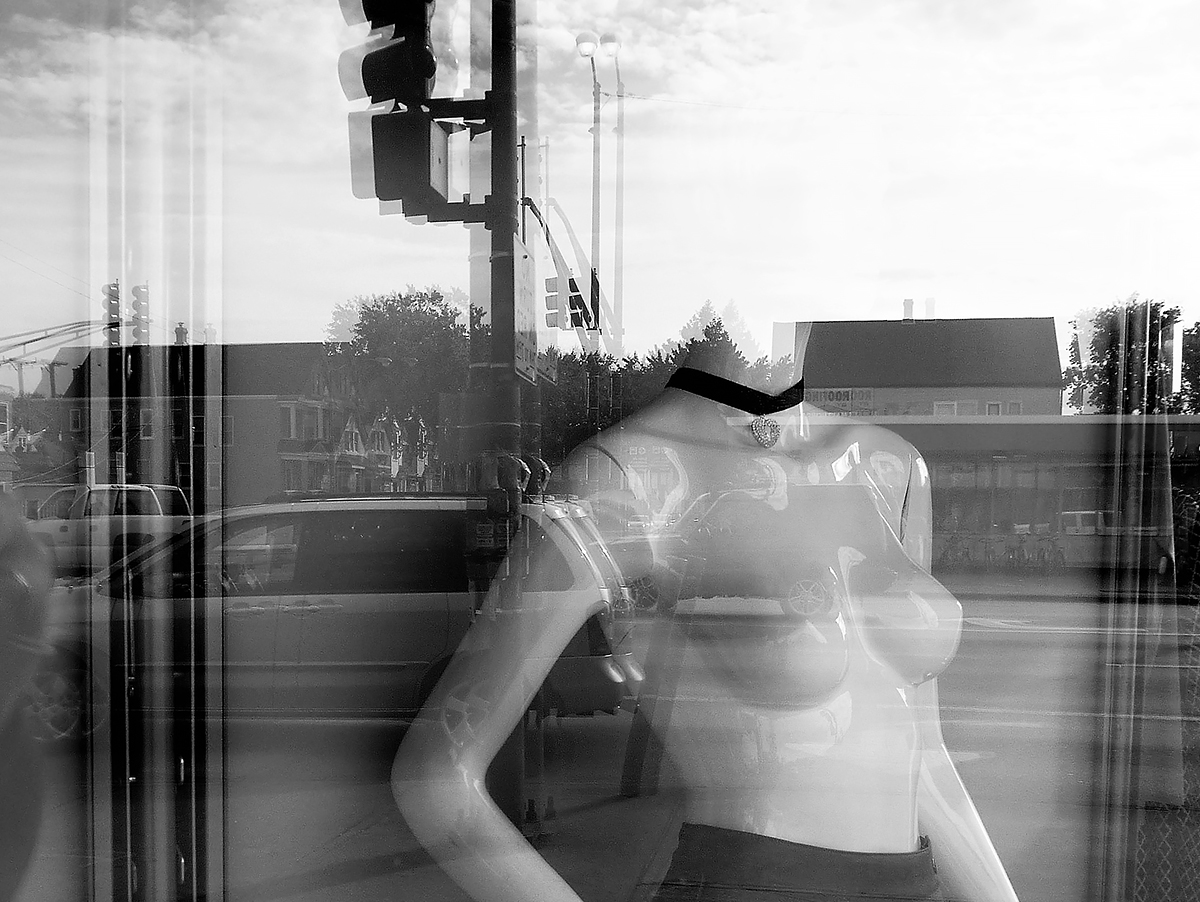
Copyright © Raju Peddada August 8, 2021. Text & Images, All Rights Reserved.
